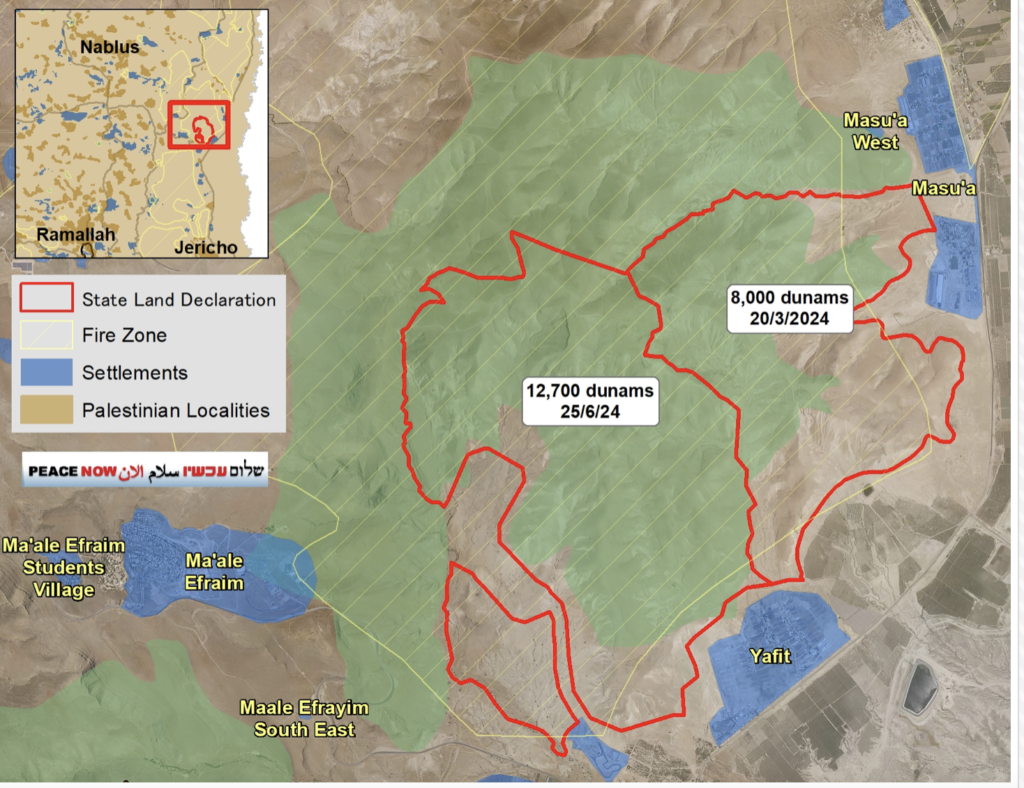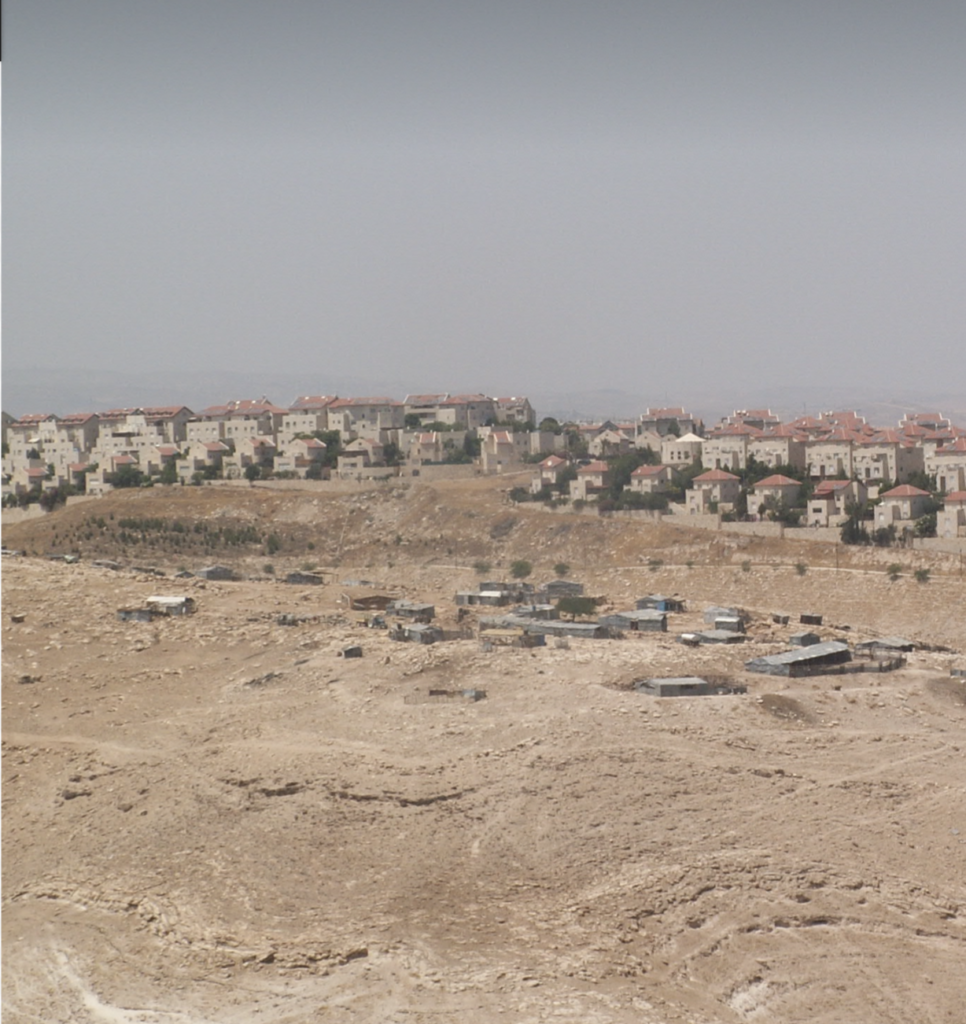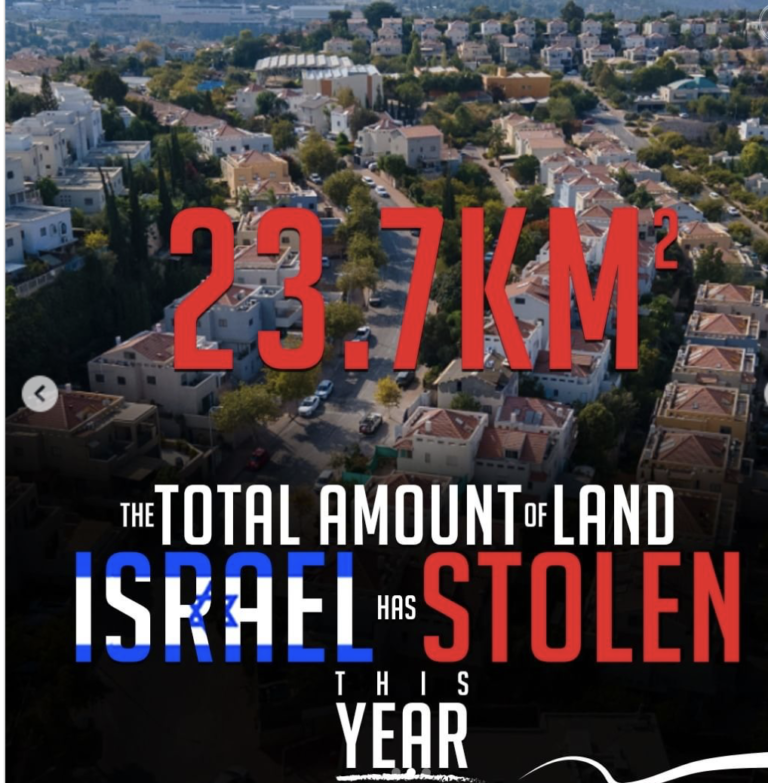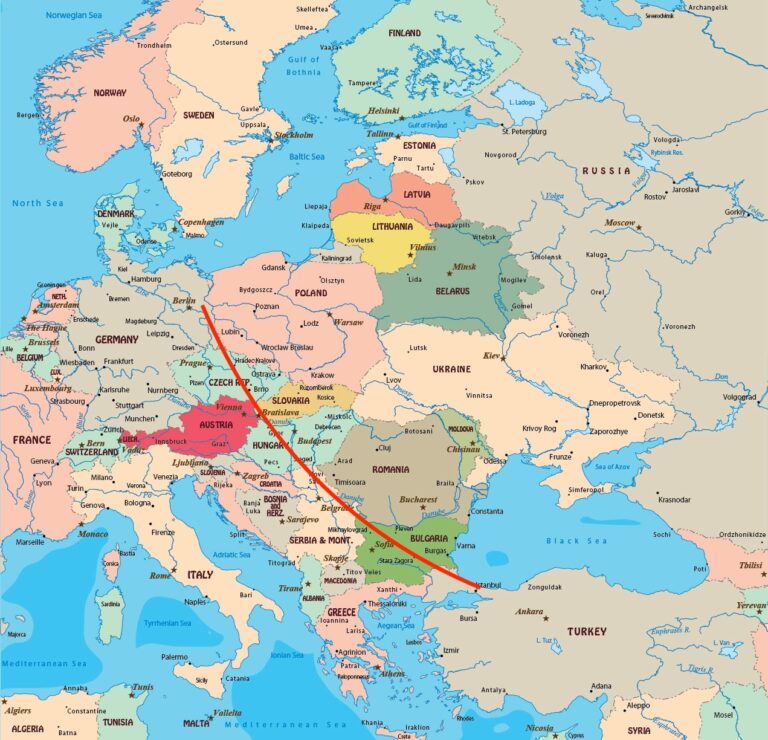By Andrea Tucci,
Israel has recently approved the largest land seizure in the occupied West Bank in the last thirty years, an action that risks further intensifying tensions in the region. The anti-settlement group Peace Now revealed that Israeli authorities have authorized the appropriation of 12.7 square kilometers (12.700 Dunams) in the Jordan Valley, marking a significant increase in the occupation of Palestinian lands.
This seizure follows those of 8 square kilometers in March and 2.6 square kilometers in February, making 2024 the peak year for Israeli occupation in the West Bank. Declared, by Israel, as state lands, these plots have been made only available for leasing to Israelis, prohibiting private Palestinian ownership.
The expansion of Israeli settlements in the West Bank has long been considered illegal by most of the international community, including the United States, and represents a significant obstacle to peace. The recent approval of over 6,000 new housing units and the legalization of five new settlements have sparked international condemnation, including from Egypt, which denounced the move as a violation of international law. This expansion occurs in a context where Israel is governed by a coalition that includes strong supporters of settlements. The size of the area designated for the expansion is the largest since the Oslo Accords of 1994, could lead to a series of escalations.
The declaration of israel of “State Land” is one of the main methods by which Israel seeks to assert control over land in the occupied territories. Land declared as “State Land” is no longer considered privately owned by Palestinians and they are prevented from using it. Additionally, Israel leases state land exclusively to Israelis.
A significant part of the area that is been declared by Israel as “State Land” previously was defined as a: nature reserve and as a “fire area”, for military use. This announcement completes the Israeli takeover of this area imposed many restrictions on the Palestinians’ ability to use their lands. This declaration creates a territorial continuity between the settlements in the Jordan Valley (Yifit and Masu’a) and the settlements at the eastern end of the mountainside (Gitit and Ma’ale Efraim).

Today, it is clear to everyone that this conflict cannot be resolved without a political settlement that establishes a Palestinian state alongside Israel. Still, the Israeli government chooses to actually make it difficult and distance us from the possibility of peace and stopping the bloodshed.
On one hand, Palestinians might intensify protests and resistance, increasing the risk of violent clashes. On the other hand, the international community could intensify diplomatic pressure and sanctions against Israel, further isolating it. Additionally, the expansion of settlements could further undermine the already fragile relations between Israel and its Arab neighbors, complicating efforts for normalization and cooperation in the region.

Photo: Israeli settlements in the Palestinian territories
If tensions continue to rise, the possibility of a new Palestinian intifada or military escalation cannot be excluded, potentially involving militant groups in the Gaza Strip or even triggering a broader conflict. Ultimately, Israel’s decision to proceed with the largest land seizure in the West Bank in the last thirty years represents a significant step that could have serious geopolitical repercussions, jeopardizing stability and peace in the region.



